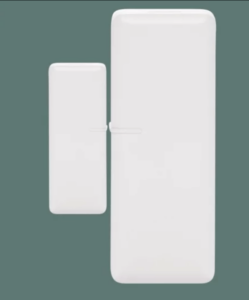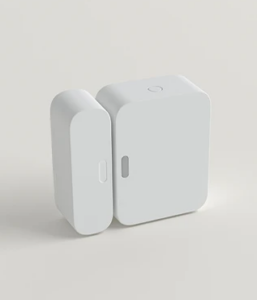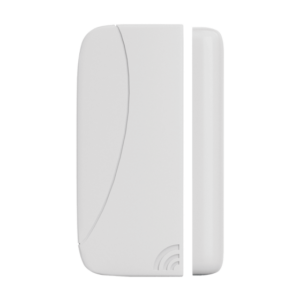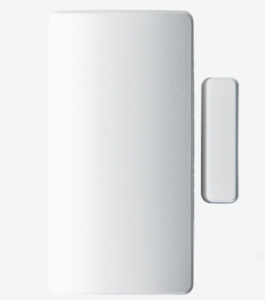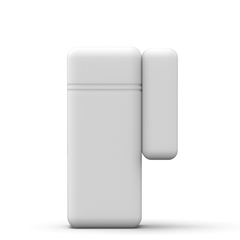It’s not magic; it’s just magnets
How Does a Door Sensor Work? And Other Important Questions
Sometimes we get a little paranoid that someone might be using that back door we always forget to lock, but there’s no way to know for sure—Oh wait, there actually is: door sensors.
We pretty much know everything there is to know about door sensors, and we’re about to share it all.
Why use a door sensor?
A door sensor is a great way to know when someone opens or closes a door to your home.
Opening the door will alert the sensor and trip a siren when your home alarm is set. And when an alarm isn’t set, the sensor will still let you know if the door opens or closes, making it easy to track if anyone’s leaving or entering the house when they shouldn’t.
The door sensor alerts you that someone’s using the door, but it doesn’t tell you who. If you also want to see the folks coming in and out, we suggest adding a security camera. That way, if something seems off, you’ll have footage.
Security cameras can sometimes fail, so the safest option is to use a camera with a sensor—not to use a camera instead of a sensor.
How does a door sensor work?
Door sensors usually come in two pieces. One piece has a magnet in it, and the other holds an electrical part called a reed switch.
The magnet and reed switch are very attached to each other (literally). When you open the door and separate them, they share their displeasure by triggering the alarm.
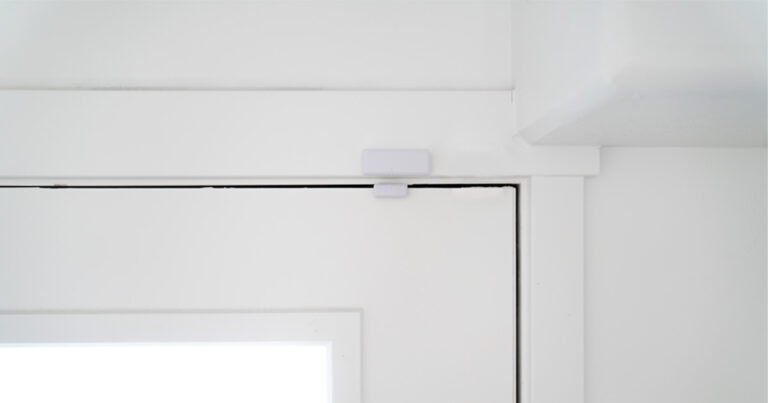
Other door sensors (like recessed door sensors for uneven frames or garage door sensors) operate similarly.
Which door sensor should I choose?
First of all, do you want a wireless sensor or a wired one? We strongly recommend a wireless sensor that communicates using radio signals. It’s harder to disable and much easier to set up in your home. Plus if you move, you can easily remove the sensor and take it to your new place.
Also, do you want a sensor that’s connected to a bigger home security system? Or did you just want to low-key track that one door? If you don’t want an accompanying alarm system, a standalone option like this TESSAN sensor might be the way to go.
The table below shows the top home security systems with sensors that we recommend. All of them use a wireless sensor setup, although not all of them require you to install the sensor yourself.
Data effective 08/15/2022. Offers subject to change.
A contact or entry sensor is a fancy name for a door/window sensor combo. It’s a catch-all sensor that you can use for any door or window you want.
How do you install a door sensor?
Most door sensors are pretty easy to install. The main issue is lining them up on the door frame.
If the two halves of the sensor don’t align just right, they won’t work. (If there’s no way for you to get the halves aligned on your door frame, a recessed sensor might be a better option.)
Installing a wireless door sensor typically looks something like this:
- Wipe down and dry the door frame and door.
- Activate the sensor.
- Wirelessly connect the sensor to the app/hub/alarm system.
- Apply adhesive to the two sensor halves. Some come pre-installed with an adhesive on them–all you have to do is peel off a strip.
- Press the halves to the door frame and door.
A wired door sensor is a whole other kettle of fish. You’ll probably need a professional electrician to install one of those.
Recap
Here’s a quick-and-dirty summary of everything we just learned.
- Why use a door sensor? We don’t know about you, but we don’t like randos walking into our homes.
- How does a door sensor work? The magic is in the magnets.
- Which door sensor should I choose? Whichever one you want, depending on your wired/wireless and standalone sensor/security system needs.
- How do you install a door sensor? It’s almost as easy as closing an envelope. (A stick-and-peel envelope, that is. We don’t recommend licking your door sensors.)
Learn about locks.
Learn about smart locks.
Related Articles




